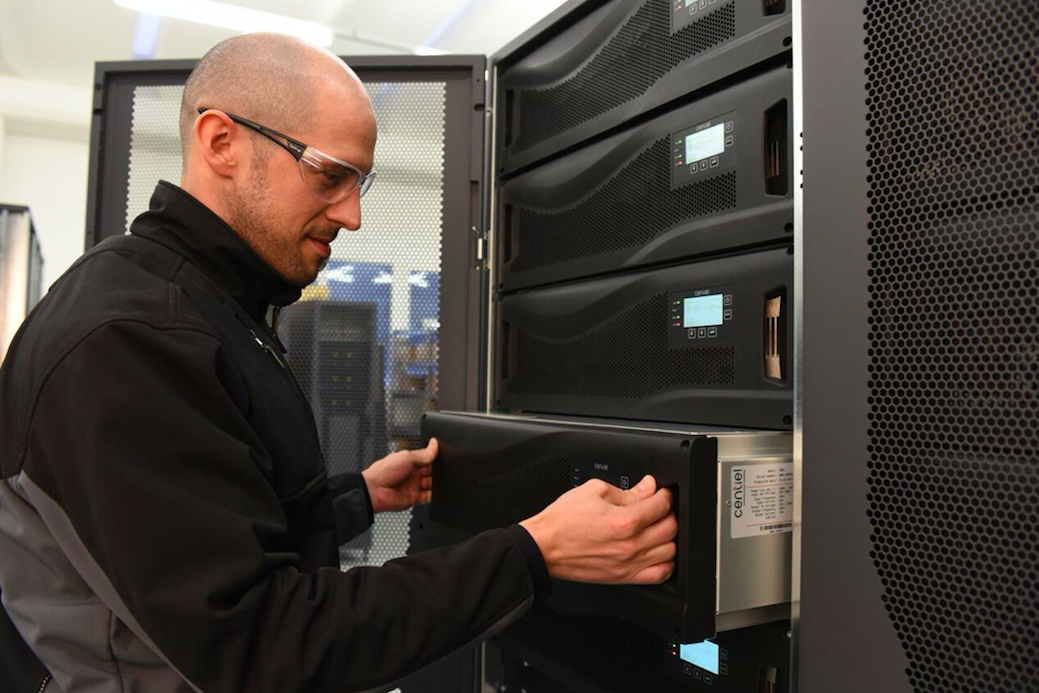Mike Elms, sales and marketing director at Centiel Ltd, discusses how to ensure data centre efficiency and availability, as well as the necessary maintenance required to ensure this remains a constant.
What do data centres require of their power delivery? The answer is easy: 100% power availability, 100% of the time. In other words, they want a system that never fails.
However, reliability is often considered the key attribute for any UPS solution. Yet, a system can be reliable over a period of time, but still fail on a particular occasion with far-reaching consequences. Therefore, availability must be the number one priority when purchasing any UPS solution.
Availability can be expressed by the following equation where MTBF equals Mean Time Before Failure and MTTR equals Mean Time To Repair:
Availability = MTBF/MTBF + MTTR
Availability is expressed as a percentage. The key number here is MTTR (if MTTR = 0 then Availability is always 100% regardless of MTBF).
Modular systems
In recent years, modular systems have introduced a significant step-change in the industry as, when properly configured, they are designed to maximise load availability and system efficiency simultaneously.
This is achieved because modular systems have a single frame, containing a number (N) of power modules. These run together and share the load equally between them. The advantage of this N+1 configuration is that if one module fails it becomes isolated. The remaining modules support the load and the system availability is preserved.
UPS modules are paralleled vertically within a single frame, and frames can be further paralleled horizontally to provide a completely flexible system. There is no single point of failure, contributing to the highest level of availability for power protection. The load also remains protected even when any individual module is being replaced.
Centiel’s CumulusPower is the latest 4thgeneration of true modular UPS systems, incorporating Distributed Active Redundant Architecture (DARA), it provides a significant improvement over previous system designs.
The critical power protection industry is, understandably, extremely risk averse, and is particularly attentive regarding potential single points of failure. Therefore, each individual CumulusPower UPS module contains all the elements of a standalone UPS unit – rectifier, inverter, static switch, display – and critically – all control and monitoring circuitry.
This eliminates the potential single point of failure associated with designs that have a separate, single static switch assembly, separate control or intelligence modules. Availability for the 4th generation Centiel system is now Nine 9s or 99.9999999%.
Batteries
In addition, with all the focus on the UPS units themselves, it can be forgotten that an integral element of a system is the associated batteries which provide power in the event of an electrical supply interruption or blackout. Equal consideration needs to be given to the design of the battery system, including rigorous battery autonomy calculations, selecting a quality supplier, the provision of redundant strings, individual string protection/isolation and ambient environment to name but a few.
With all the time, effort and expense of designing and installing the very best UPS system it is important that it is properly maintained to ensure availability is not compromised. Suppliers offer a variety of maintenance proposals and SLAs and diligence must be applied up front, in scrutinising and choosing the correct solution for each installations requirement. Any UPS that is not maintained properly may ultimately compromise overall system availability.
As well as availability, organisations need to consider the total cost of ownership of a UPS system and this is related to the purchase price, system efficiency (running costs) and the cost of maintenance.

Efficiency
I’ve touched on maintenance, so how a system is configured to maximise efficiency is another area demanding attention. The challenge is that IT requirements change quickly. So how can an infrastructure be built to meet these dramatically changing demands? Put simply, a UPS needs to operate on the best point of its efficiency curve. A system which is too small will be overloaded and a system which is too large will waste energy and be inefficient and costly to run. Scalability and flexibility are key when purchasing, to ensure the continual ‘right sizing’ of the UPS.
Modular systems offer all the advantages of high availability, scalability and flexibility to match an organisation’s changing requirements. In addition, they offer the benefits of: fast replacement of modules, small footprint with high power density and, when correctly configured to ensure system “right sizing,” operating costs can be kept to a minimum.
In our ever-evolving world, future-proofing systems is one of the greatest challenges faced by system designers. The good news is that modern modular UPS systems can be quickly and easily reconfigured to adapt to changes in load requirements over time. This not only ensures the highest efficiency is maintained, but more importantly it guarantees availability of power protection whatever the future holds.


